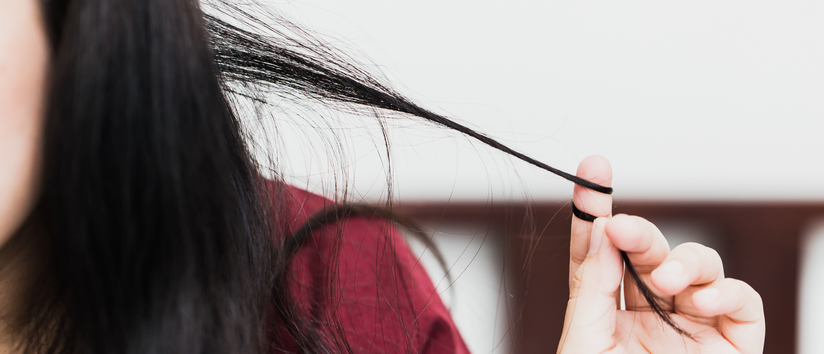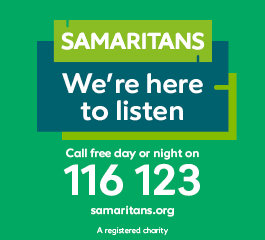I pull my own hair out as a post-traumatic response - and now I've made peace with it
01 October 2019
A year ago to the day I wrote an article about the strange, shameful thing that has blighted my life since I was a teenager.
Despite being obvious to anyone who observed my behaviour and my appearance, this was something I never thought I would be comfortable discussing.
I pull my hair out. Compulsively. And now I've made peace with it.
Relapse
"I'm well aware that I may relapse: but this possibility doesn't seem so terrible now I know I wouldn't have to deal with it alone" was how I ended my last piece on Body-Focused Repetitive Behaviours, trichotillomania (hair pulling) in particular.
I'm not sure that I believed this when I wrote it. I had been four months pull-free and naively thought that I had conquered this behaviour once and for all by shaving my head.
"I didn't want hair. I wanted to make sense of why exactly I began to pull it out and I wanted support to process this."
Every day I fought the urge to pull, fuelled by the knowledge that if I just kept my hands away from my scalp then I would have the long, natural hair that I've wanted since I began pulling age fifteen. I was so close. I almost had it.
A particularly stressful university essay brought my eight months of not pulling to an end. I absentmindedly started pulling and before I knew it, the hair that was now long enough to wear without a wig was covering my desk. In its place was a bald patch. It wasn't the growing bald patch that upset me but the realisation that I enjoyed creating it. After eight months without pulling I thought that it would hurt or feel alien enough to deter me from doing it, but I still reaped sensory satisfaction from it. I continued to pull until the damage was so extensive that I knew the only thing that would make me stop was shaving my head again. And so, I haven't pulled my natural hair since I shaved it two months after the relapse.
I didn't anticipate how much of a relief it would be to shave my head for a second time.
I had already told those around me that hair pulling was something I struggled with; I had lived my life as a wig-wearer; I had experienced first hand that my happiness was in no way dependent on whether or not I pulled my hair out.
After struggling with trichotillomania for over seven years I now understand that it is not the condition in itself that caused me distress. My distress was rooted in the reasons why I began to pull my hair.
Whilst many people start to pull as a young child, finding it comforting in a similar way to sucking a dummy, I developed the condition as a post-traumatic reaction: a way to externalise the distress I was experiencing through a sensorily gratifying behaviour. The distress came from feeling like I couldn't control the pulling but the more out of control I felt, the more I pulled to regain this control. Paradoxical, I know.
I now understand my trichotillomania not as a distinct disorder in itself but as a facet of my Dissociative Identity Disorder and Complex Post-Traumatic Stress Disorder.
Reconceptualising its post-traumatic roots
Age fifteen, my brain was not ready to comprehend the trauma I had experienced - and was experiencing - in the form of narrative memories. But by manifesting itself as hair pulling I was alerted that something was "off" without having to confront the horrifying violations behind it.
Whilst my hair pulling started as a post-traumatic reaction it no longer serves me in this way.
Yes, the one relapse I experienced was stress-induced, but so what? We all engage in certain behaviours when stressed be it having a few too many pints, drinking obscene amounts of coffee, overworking, overexercising, eating unhealthily. As coping mechanisms go, hair pulling is not one which causes me distress: it doesn't hurt; I find it soothing; and the consequences of being bald and wearing a wig don't upset me. In fact, I enjoy wearing wigs. Pulling my hair during stressful periods prevents me from employing coping mechanisms that do cause me harm such as giving myself black eyes, overdosing, engaging in unsafe situations, and picking my skin to create open wounds.
That is not to say that I won't fight the urge to pull - I fight it every single day. But relapse is not the end of the world because there are no devastating or even upsetting consequences. There's just frustration which I am now able to let go of. I shouldn't be frustrated with myself. Relapse isn't a failure on my part it's just a part of recovering from trauma. For me, hair pulling is not self-harm.
- See more: Body-Focused Repetitive Behaviours: the complex disorders that are more common than you think
- See more: Denying the traumatic origin of Dissociative Identity Disorder denies those who live with it a recovery
- See more: Post-traumatic disorders
Whilst BFRBs, by definition, damage the body, who's to say that pulling your own hair out is inherently damaging?
It has taken me years to reach this place but now that I'm here, I realise that I no longer mourn the long, natural hair I will likely never have again and that's okay because I never really wanted it. I didn't want a full head of long hair. I wanted to make sense of why exactly I began to pull it out and I wanted support to process this.
Symbolically, I have no desire to recreate my pre-trichotillomania appearance. Having the hair I had as a young teenager would not represent a return to innocence, or better mental health, or a life unburdened by trauma. There is no former glory to restore.
When I wrote about this condition a year ago I really thought that a burden shared would be a burden lightened. Maybe telling others about my condition would be enough to help me stop or at the very least, enough to help me accept it. Revealing the extent of my hair pulling to those around me was the first step in acceptance but it certainly wasn't the end. For me, coming to terms with hair pulling is coming to terms with trauma.
Having my own long hair isn't going to change my life. Perhaps processing rather than just acknowledging the traumatic origins of my hair pulling will reduce it. Maybe not. And that's okay.
As I write this, long blonde strands from my wig litter my keyboard. Oh well.
This week is BFRB Awareness Week. The TLC Foundation is a non-profit organisation that strives to increase awareness of BFRBs and provide support for people who are affected by them. For the first week of every October the foundation uses campaigns, events, and fundraisers to get the message out that these disorders are extremely common and that there are treatment options available for sufferers.


Comments
Write a Comment
Comment Submitted